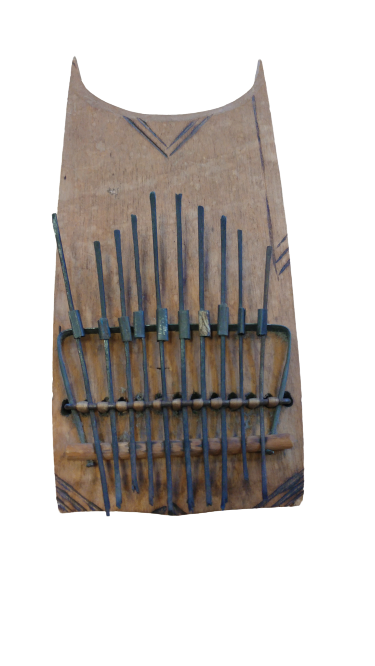 We have an akogo in our Racial Justice Collection.
We have an akogo in our Racial Justice Collection.
The akogo, also known as the thumb piano, is a very popular instrument from Uganda. It is made up of a series of flexible metal tongues of different lengths. It makes its sound by pairing these vibrating membranes with a small wooden chamber made of kiaat wood. Kiaat is a small tree with yellow flowers that is native to southern Africa.
Musicians play the akogo with two hands. They use their thumbs to pluck the upturned end of the metal tongues, which they usually tune to the diatonic scale of G major. In Uganda, the instrument is usually played by solo musicians. Some musicians add small metal wraps to the tongues, which makes a rattle effect as they play. The akogo is classified by musicians as a type of instrument called a lamellaphone or idiophone.
There are many variations of these types of instruments across Africa. In Zimbabwe, the instrument of the Shona peoples is the "mbira", which is another type of lamellaphone. Mbira are a family of musical instruments which are traditional to the Shona people of Zimbabwe. They have a wooden board with attached staggered metal tines. They are played by holding the instrument in the hands and plucking the tines with the thumbs, the right forefinger, and sometimes the left forefinger.
The Pitt Rivers Museum website hosts a video of a conversation with Thabo Muleya who explains the cultural significance of the mbira instrument here. He explains how the instrument was used in celebrations and community events such as harvests, rain dances, weddings and funerals, as well as being used by spiritual seers and traditional healers. Mbira players would play the instruments while seers and healers were practising. When the country was colonised, he notes that the mbira was regarded with suspicion by Christian missionaries and converts.
The playing of the mbira "went underground", resurfacing as a source of inspiration during the Zimbabwean struggle for independence up to 1980.